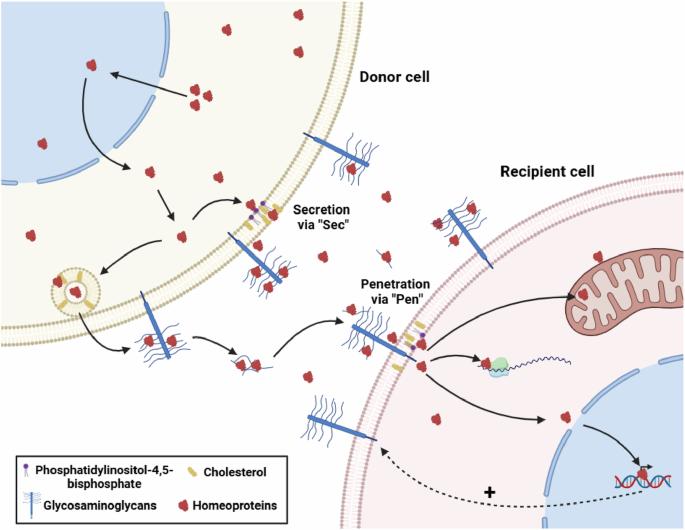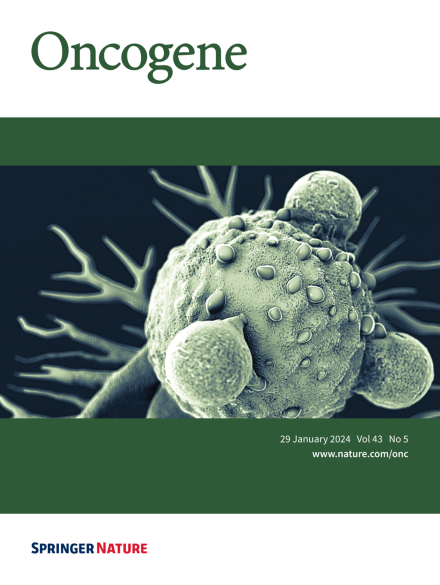旅行同源蛋白和成神经管细胞瘤。
IF 7.3
1区 医学
Q1 BIOCHEMISTRY & MOLECULAR BIOLOGY
引用次数: 0
摘要
髓母细胞瘤是最常见的儿童实体肿瘤。其预后在很大程度上取决于肿瘤亚型和转录因子OTX2 (Orthodenticle homeobox 2)的表达水平。OTX2是一种同型蛋白,维持细胞的干性并启动致癌途径。此外,与许多其他同型蛋白一样,OTX2能够在细胞之间移动并改变受体细胞的转录活性。在鉴定了体内模型中的移动蛋白后,系统回顾了文献,发现至少有11种移动同源蛋白与成神经管细胞瘤相关:Cut like homeobox 1 (CUX1)、Engrailed homeobox 1和2 (EN1和EN2)、胰岛素基因增强蛋白ISL1 (ISL1)、LIM homeobox 1 (LHX1)、homeobox蛋白Nkx-2.2 (NKX2.2)、OTX2、Paired box蛋白pax -5,6和8 (PAX5、PAX6和PAX8),以及POU结构域第5类转录因子1 (POU5F1)。其中一些同型蛋白编码基因如OTX2和POU5F1的过表达与预后不良相关,而PAX8的过表达似乎具有保护作用,总生存期和无进展生存期明显提高。为了更好地了解这些转录因子的转移机制和细胞内靶点,研究工作可能会提供一系列新的治疗工具,通过干扰这些漫游的癌蛋白来限制其相关的基因失调连锁反应,或者通过提供保护性同源蛋白补充来阻止肿瘤的发展,通过直接癌细胞渗透和重编程。本文章由计算机程序翻译,如有差异,请以英文原文为准。

Of travelling homeoproteins and medulloblastomas
Medulloblastomas are the most common solid paediatric cancers. Their prognosis largely depends on tumour subtype and expression level of transcription factor such as Orthodenticle homeobox 2 (OTX2). OTX2 is an homeoprotein that maintains stemness and initiates oncogenic pathways. Additionally, as many other homeoproteins, OTX2 is able to travel between cells and to modify the transcriptional activity of recipient ones. After identifying travelling proteins in in vivo models, a systematic review of the literature highlighted that at least eleven travelling homeoproteins are associated with medulloblastoma: Cut like homeobox 1 (CUX1), Engrailed homeobox 1 and 2 (EN1 and EN2), Insulin gene enhancer protein ISL-1 (ISL1), LIM homeobox 1 (LHX1), Homeobox protein Nkx-2.2 (NKX2.2), OTX2, Paired box protein Pax-5,6 and 8 (PAX5, PAX6 and PAX8), as well as POU domain, class 5, transcription factor 1 (POU5F1). Overexpression of some of these homeoprotein-coding gene including OTX2 and POU5F1 was found to be associated with poor prognosis, while overexpression of PAX8 seems to have a protective effect, with a significantly better overall and progression-free survival. Research efforts to better understand the transfer mechanisms and intracellular targets of these transcription factors may offer a new range of therapeutics tools, by interfering with these roaming oncoproteins to circumscribe their associated chain reaction of genetic deregulation, or by providing protective homeoprotein supplementation with the aim of stemming tumour development by direct cancer cell penetration and reprograming.
求助全文
通过发布文献求助,成功后即可免费获取论文全文。
去求助
来源期刊

Oncogene
医学-生化与分子生物学
CiteScore
15.30
自引率
1.20%
发文量
404
审稿时长
1 months
期刊介绍:
Oncogene is dedicated to advancing our understanding of cancer processes through the publication of exceptional research. The journal seeks to disseminate work that challenges conventional theories and contributes to establishing new paradigms in the etio-pathogenesis, diagnosis, treatment, or prevention of cancers. Emphasis is placed on research shedding light on processes driving metastatic spread and providing crucial insights into cancer biology beyond existing knowledge.
Areas covered include the cellular and molecular biology of cancer, resistance to cancer therapies, and the development of improved approaches to enhance survival. Oncogene spans the spectrum of cancer biology, from fundamental and theoretical work to translational, applied, and clinical research, including early and late Phase clinical trials, particularly those with biologic and translational endpoints.
 求助内容:
求助内容: 应助结果提醒方式:
应助结果提醒方式:


